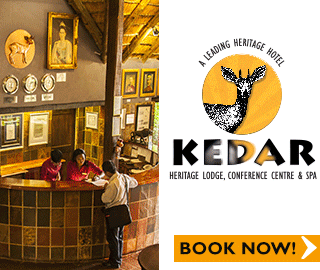
Waiting for the Young Men: Initiation in eastern Lesotho
WORDS AND PHOTOGRAPHS BY ALESSANDRO PARODI 23 MAY, 2015 11:35
…the young adults of the village have left for the mountains. They will be circumcised and will come back after three months. They will be men now. In the village, apprehension and melancholy spreads as everybody awaits their return….
Most deaths are known to be caused by resultant infections from circumcisions when charlatan healers conduct the ceremonies without safety precautions and perform the actual circumcision incorrectly. Conditions are excasserbated by the winter conditions and lack of warmth and shelter and hunger for the young initiates.
“The first Sotho king hid in the caves at the bottom of this village during the war against the Afrikaner Boer settlers at the beginning of the 19th century”, he explains, sitting in the tiny living room of the biggest house of the village. Behind him lay a world map and a picture of the ruling king, Letsie III. A group of children queues while Malefetsane sells airtime for ten maloti, the local currency, and counts the income.
Moshoeshoe too was initiated, in the mountains of Menkhoaneng of the Leribe district. “When he was there with his peers they had to fight a big battle against the Voortrekkers, the avant-garde of the conquerors who came from overseas. Once the battle was over, they continued on their journey to conclude the three months of initiation”.
Malefetsane, this year, is in charge of the boys’ expedition. His duty is to organize the trip to the mountain and make sure that the sangomas who will follow them will act righteously. Girls also undergo initiation, but their group will remain not far from the village. They will learn their duties as women and future housewives.
Hundreds of initiates die every year in the mountains with statistics attributing 486 deaths *and 455 628 hospitalised between 2008 and 2014 in the South African regions of Eastern Cape, Mpumalanga and Limpopo. Much fewer, however, are the incidences in Lesotho. “In South Africa”, furthers Malefetsane, “there is no control because of illegality and greed. Our sangomas are instead real guides and good medicine men. They know how to take care of the boys and nothing bad ever happens”.
Most deaths are known to be caused by resultant infections from circumcisions when charlatan healers conduct the ceremonies without safety precautions and perform the actual circumcision incorrectly. Conditions are excasserbated by the winter conditions and lack of warmth and shelter and hunger for the young initiates. The South African government has taken note of the numerous deaths that have occurred in initiation rites across all denominations and is working together with traditional chiefs to educate and prevent further deaths of the youths while preserving the ancient rites at the same time.

While the young men are away, a surreal aura surrounds the village of Phelandaba. A part of the community is missing and time seems to have stopped. It has to be noted that the average age in Lesotho is 21.1 years, making the group of the initiates the core of society. Schools are closed and small children slowly ride donkeys to the shack where they will grind dry corn to make maize meal. On the A1, the main road that leads to Maseru, some girls are gathering wood. People will buy it to make a fire or to fix the roof of their huts.
An old woman is walking by slowly, burdened by the weight of her age. When asked about initiation, she smiles and glimpses at the mountains. Her brothers, the man she loved and the children they had together have all been there in the past. She recalls the fear as a sister, the pain as a mother, and then the joy of seeing them come back. They were covered with red clay, which symbolizes that the young men passed their trial. “The entire village”, she says, “is now waiting for that moment. When the new men will come back, we will welcome them with dances, fires and feasts to be remembered in years to come”.

The pride of the sotho people in the face of an old villager of Phelandaba. Photo: Alessandro Parodi
A sotho kid from Lesotho pulls an ox cart towards town. Photo: Alessandro Parodi
Elderly in Botha Bothe. Blankets are traditional sotho garment. Photo: Alessandro Parodi

Moteng. Sotho villages in the valleys of eastern Lesotho. Photo: Alessandro Parodi
They left for the mountains only to return three months later, transformed from boys into men.
Every year thousands of adolescents follow the sangomas, known as traditional healers , to venture into the Drakensberg mountains which extend for hundreds of kilometres between South Africa and Lesotho, in Southern Africa. The initiates will have to overcome difficult trials awaiting them. Then, they will be circumcised under the shade of the highest peaks of the Drakensberg. On their homecoming, they will have become worthy of being men and family fathers.
The boys leave behind them school and household duties that denote growing up in a village such as gathering wood, cattle breeding and grinding maize. Mothers await them in distress, fearing that the god Modise, who hides in the mountains, will take one of them to feed his cruelty. He who is too weak to survive in the extenuating period of the initiation will not return and will be taken – villagers whisper “sacrificed” – in the jaws of this ancestral spirit of the Basotho, who live in the Drakensberg.
Legends about the three months of the initiation unfold in the excited and scared voices of those who remain. These tales are bordered on reality and myth whispered for centuries by the winds that sweep through the village, coming from the top of the mountains. For three months the adolescents will hunt wild animals and defeat the cold, light camp fires and improvise on building shelters.
Black magic will ensnare them, sent by witches and witch doctors seeking organs and human limbs to prepare their drugs. Nothing is more potent than human flesh and blood to concoct the magical effects of muthi, a blend infamous for its healing and affluent effects. The initiates will discover how hard it is to live in the mountains for three months. However, not a single moment of their life-changing experience will be revealed to the outsiders.
The history of a proud rural people and of its kings coexist with the legends. We are in the village of Phelandaba, in eastern Lesotho, 300 kilometres away from the south-eastern coast of Africa. Here old Malefetsane tells the story of the mythic Moshoeshoe I, forefather of the Sotho royal family.















